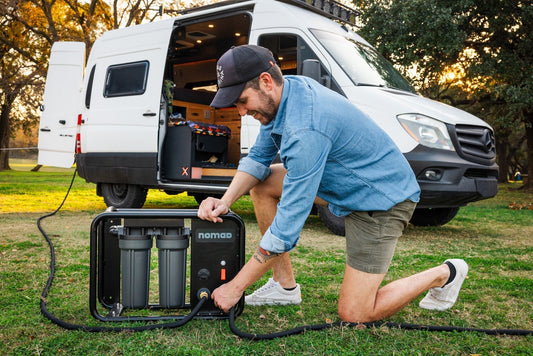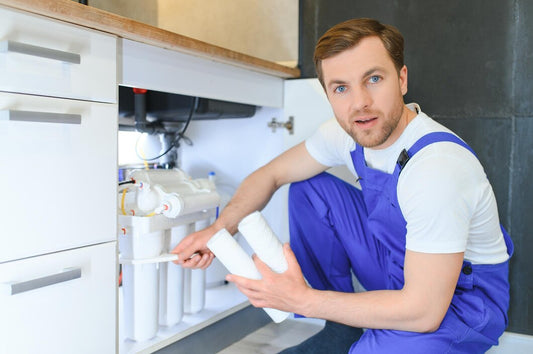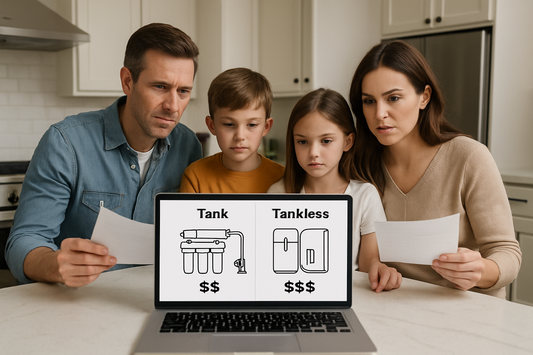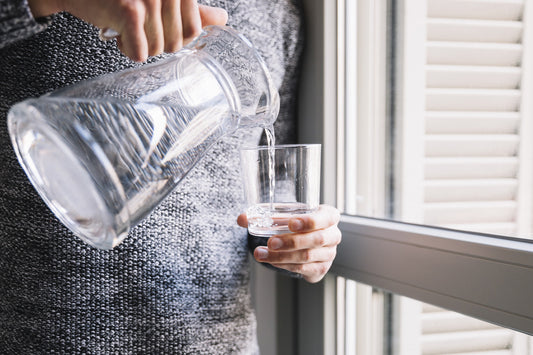Clean, safe water isn't just a luxury—it's essential for your family's health and your home's longevity. If you're tired of metallic-tasting water, stained fixtures, or concerns about contaminants, installing a water filter for entire house might be the solution you've been searching for.
Whether you're dealing with well water challenges or municipal water quality issues, understanding how to properly set up and maintain a home water treatment system can transform your daily life. Let's walk through everything you need to know about creating the perfect water filtration setup for your home.
Why Your Home Needs a Complete Water Treatment System
Think about it: water touches every aspect of your daily routine. From the morning coffee that kickstarts your day to the evening shower that helps you unwind, water quality affects more than you might realize.
Poor water quality doesn't just affect taste—it can damage your appliances, leave stubborn stains on clothing, and potentially impact your family's health. Hard water alone costs the average homeowner hundreds of dollars annually in appliance repairs and replacements.
A properly designed home water treatment system addresses these issues at the source, ensuring every drop of water entering your home meets your standards for purity and safety.

Understanding Your Water: The Foundation of Effective Treatment
Before diving into equipment selection, you need to understand what you're working with. Water quality varies dramatically depending on your source—whether you're on municipal water or have a private well.
Well water often contains higher levels of iron, sulfur, and mineral content, requiring more comprehensive treatment. Municipal water, while treated for safety, may still contain chlorine, fluoride, and other additives that affect taste and odor.
The key to successful water treatment lies in testing your water first. This isn't just a suggestion—it's essential. Without knowing your water's specific characteristics, you're essentially guessing at solutions.
The Critical Importance of Proper System Sequencing
Here's where many homeowners make costly mistakes: they focus on individual components without considering the system as a whole. Just like baking a cake, the order of operations matters immensely in water treatment.
The Pressure Tank: Your System's Starting Point
Every effective water filter for entire house setup begins with proper pressure management. Your pressure tank isn't just storage—it's the foundation that ensures consistent water flow throughout your treatment sequence.
Think of your pressure tank as the conductor of an orchestra. It coordinates the performance of every component downstream, ensuring each piece of equipment receives water at the optimal pressure and flow rate.
Iron and Sulfur Removal: First Line of Defense
If your water has that telltale metallic taste or rotten egg smell, iron and sulfur filtration becomes your first priority. These contaminants not only affect taste but can also interfere with downstream equipment performance.
Modern iron filters use oxidation and filtration to remove these problematic elements. The key is choosing the right type based on your water's pH level and iron concentration. Chemical-free systems are becoming increasingly popular among homeowners who prefer natural treatment methods.
Water Softening: Protecting Your Investment
Hard water is more than an annoyance—it's a silent destroyer of appliances and plumbing. Those white, chalky deposits you see on fixtures are just the visible signs of a much bigger problem.
A quality water softener doesn't just make water feel better on your skin; it extends the life of your water heater, dishwasher, and washing machine. The return on investment from reduced appliance maintenance and replacement costs often pays for the softener system within the first few years.
Crystal Quest whole house systems offer advanced softening technology that requires minimal maintenance while providing consistent results. These systems use high-grade resin that lasts longer and performs better than standard residential softeners.
UV Treatment: The Invisible Shield
Bacteria and viruses are threats you can't see, taste, or smell—but they're potentially the most dangerous contaminants in your water. Ultraviolet light treatment provides a chemical-free method to eliminate these microscopic threats.
The beauty of UV treatment lies in its simplicity and effectiveness. As water passes through the UV chamber, high-intensity light destroys the DNA of harmful microorganisms, rendering them harmless without adding any chemicals to your water.
A proper UV system includes pre-filtration to remove sediment and chlorine, which can interfere with UV effectiveness. This typically involves a sediment filter followed by a carbon filter before the UV chamber.

Reverse Osmosis: The Ultimate in Water Purity
For families who demand the highest level of water purity, reverse osmosis represents the gold standard. Waterdrop undersink RO systems provide point-of-use treatment that removes virtually all contaminants, including dissolved solids, heavy metals, and chemical pollutants.
While whole house RO systems exist, most homeowners find that combining whole house pre-treatment with point-of-use RO provides the best balance of performance and cost-effectiveness. This approach ensures your drinking and cooking water meets the highest standards while using standard filtered water for other household needs.
DIY Installation: What You Can Handle vs. When to Call Professionals
Many components of a home water treatment system can be installed by capable DIY enthusiasts, but it's important to know your limits. Simple filter replacements and basic maintenance are well within most homeowners' capabilities.
However, electrical work for UV systems, complex plumbing modifications, and initial system design often require professional expertise. The key is starting with a solid plan and understanding which aspects of the installation you can safely handle yourself.
Maintenance: Keeping Your System Running Smoothly
The best water treatment system is only as good as its maintenance. Regular filter changes, system sanitization, and performance monitoring ensure your investment continues protecting your family's health and your home's infrastructure.
Create a maintenance schedule based on your water usage and quality. Most sediment filters need replacement every 3-6 months, while carbon filters typically last 6-12 months. UV bulbs require annual replacement, regardless of whether they appear to be working.
Crystal Quest systems are designed with maintenance in mind, featuring easy-access filter housings and clear replacement schedules. This user-friendly design makes ongoing maintenance less of a chore and more of a simple routine.
Troubleshooting Common System Issues
Even well-designed systems occasionally experience problems. Understanding common issues and their solutions can save you time and money on service calls.
Low water pressure often indicates clogged filters or a need for system regeneration. Unusual tastes or odors might signal filter replacement needs or UV bulb failure. By learning to recognize these signs early, you can address issues before they become major problems.
Cost Considerations and Return on Investment
Investing in a comprehensive water filter for entire house setup requires upfront investment, but the long-term benefits far outweigh the costs. Consider not just the initial equipment prices, but also the ongoing savings from reduced appliance maintenance, longer appliance life, and improved water quality.
Quality systems from reputable manufacturers like Crystal Quest and Waterdrop offer better long-term value than cheaper alternatives. While the initial investment may be higher, superior components and better warranty coverage provide peace of mind and lower total cost of ownership.

Making the Right Choice for Your Home
Every home's water treatment needs are unique. Factors like water source, family size, budget, and specific quality concerns all influence the optimal system design. The key is working with knowledgeable suppliers who can help you design a system that meets your specific needs without over-engineering or under-performing.
Remember, the best home water treatment system is one that consistently delivers the water quality your family deserves while fitting within your budget and maintenance capabilities. Take time to research options, test your water, and plan your installation carefully for the best results.
Frequently Asked Questions
How often should I replace filters in my whole house system?
Sediment filters typically need replacement every 3-6 months, carbon filters every 6-12 months, and UV bulbs annually. Actual replacement frequency depends on water usage and quality.
Can I install a water filter for entire house myself?
Basic filter replacements and simple installations are DIY-friendly, but complex plumbing modifications and electrical work for UV systems often require professional installation.
What's the difference between water softening and filtration?
Water softening removes minerals that cause hardness, while filtration removes contaminants like chlorine, sediment, and bacteria. Most homes benefit from both treatments.
How do I know if my home water treatment system is working properly?
Regular water testing, consistent water pressure, normal taste and odor, and adherence to maintenance schedules are good indicators of proper system performance.
Is reverse osmosis necessary for whole house treatment?
Most homes don't need whole house RO. Combining whole house pre-treatment with point-of-use RO systems provides excellent water quality while being more cost-effective.





